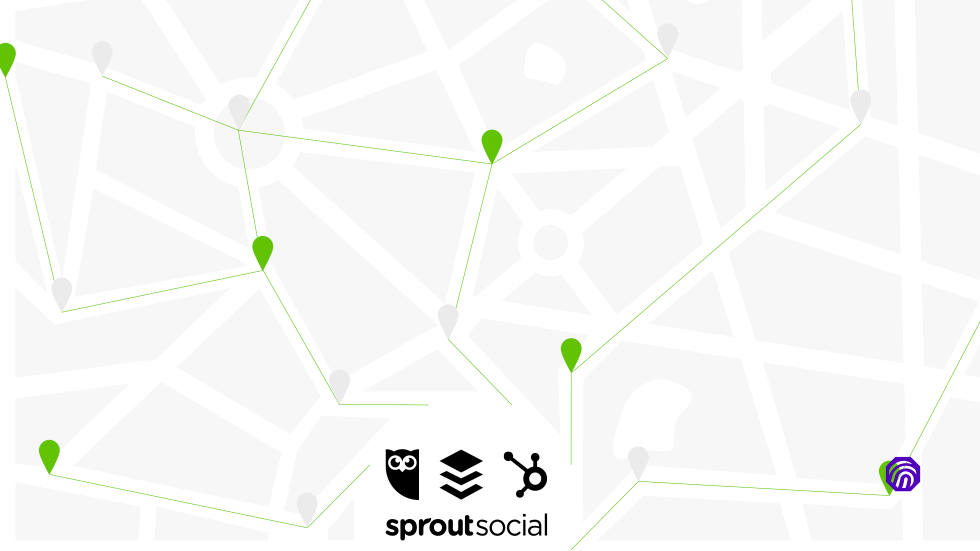Social media enables your business to increase brand awareness, generate leads, engage target audiences, increase sales, and so much more. Your customers expect it; studies show that 7 out of 10 customers are influenced by social media. If you’re not meeting your audience where they are, you’re missing opportunities to grow your customer base and, ultimately, your business.
The Downside of Social Media Marketing
If you’re not already, it’s high time to start creating and sharing social content consistently. Managing social media may not seem like a complicated process at first, but one profile quickly turns into two, and two turns into three. Before you know it, you’re spending a lot (if not most) of your valuable time writing content, scheduling, posting, and managing your social media channels. As a small business owner or part of a small team, you may not have the staffing or resources to hire a social media professional — leaving you to do most of the work. You’re not alone, either; 43% of small businesses spend six or more hours on social media each week.
Many business owners wisely turn to social media management (SMM) tools for curating, scheduling and posting content. Here, we’re sharing some of the most popular SMM tools on the market today, their various features, and why you should look to ThumbStopper as an alternative solution.
What Are the Most Popular Social Media Management Tools?
If you do a quick search on the best social media management tools, you’ll likely see the same names appear in different lists. Some of those include:
- Hootsuite
- Canva
- Buffer
- CoSchedule
- Sendible
While they all help you manage your social media, each offers different features and functionality. Some are better for scheduling, some are better for sharing, and others — like Canva — are best for designing imagery for your social posts. You’ll need to consider which tool is best for you. (It might not be one of the tools on the list above.)
What Features and Functionality Should I Look For?
Each SMM tool offers its own mix of features and functionality. One of the most common features is the ability to manage all your social profiles from one tool or dashboard. With a dashboard, you don’t have to constantly log in and out of each profile to make or schedule posts.
Other prominent features include:
- Scheduling post times and dates
- Creating and design social imagery
- Managing editorial calendars
- Running multiple campaigns at the same time
- Tracking comments and conversations
Several social media management tools offer free versions, but with fewer features. For example, you may be able to control only one social media profile or share a restricted number of posts before you have to upgrade to a paid version.
Which Social Media Tool is Best for My Business?
There’s no one “best” social media management tool, as your small business has its own unique needs. Are you looking for a tool that saves you time? Money? Helps you find content to post? First, outline the current (and future) needs of your social media marketing plan. From there, you may need to undergo some trial and error before finding a tool that suits all of your needs.
What About an Alternative Solution?
The downside to social media management tools is that someone still has to manage the tools. You will save time by managing all your social profiles and posts with one tool, but that tool may still take up a lot of time. Between research, onboarding, and management, you may spend just as much valuable time looking for and learning a tool that you initially chose in order to save time.

Enter: ThumbStopper. We take the complexity of social media management tools out of the equation. We do all the heavy lifting by collecting high-quality images and content from the brands you carry in your store and publishing it to your social feeds. The brands appreciate the chance to reach your customers, you benefit from the quality of their content, and you gain the time and space to focus on actually running your business — not just your social channels.
Let ThumbStopper Solve Your Social Media Management Problem
Customers who opt for ThumbStopper over the “best” social media management tools are experiencing a 50% increase in in-store traffic and up to 10x customer growth. All without lifting a finger. We specialize in retail businesses ranging from furniture and pet supplies to marine sports and golf carts. All you have to do is to select a plan that fits your business needs and customize it by the number of brands you sell and how often you want to show up in your customers’ social feeds.
Experience the ThumbStopper effect yourself: sign up today!











